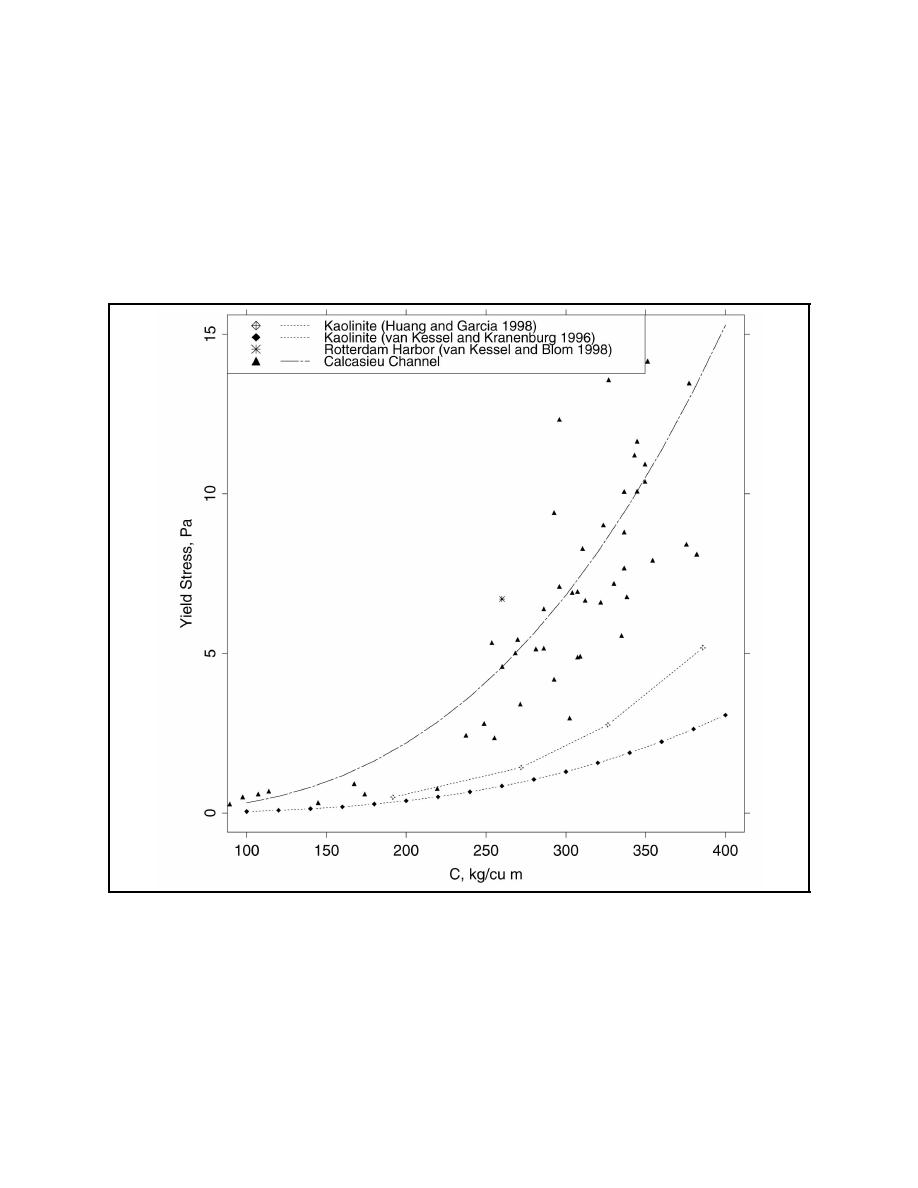 |
||
|
|
||
|
Page Title:
Figure 3. Yield stresses for some natural muds and kaolinite |
||
| |||||||||||||||
|
|
 ERDC TN-DOER-N7
August 2000
&
and γ = fluid shear-rate. The two models are equivalent when the Herschel-Bulkley exponent n = 1.
Viscous characteristics of channel muds are discussed by Teeter (1992a). Yield stress data are
shown in Figure 3 for kaolinite clay preparations and two natural sediments. Kaolinite is a model
clay often used in laboratory experiment, but, as can be seen in the Figure 3, its yield stress is much
lower for a given solids content than the natural muds from Rotterdam Harbor, Netherlands, or
Calcasieu Channel, LA. Data in Figure 3, with the exception of that of Huang and Garcia (1998),
were obtained using controlled stress rheometry. The Herschel-Bulkley model allows for shear
thinning and yield stress which have been observed in natural muds.
Figure 3. Yield stresses for some natural muds and kaolinite
As mud flows slowly, a yield surface appears above which there is plug flow (no shear) as in the
laminar velocity profile described earlier. Shear stress at the yield surface is equal to the yield stress
of the material. Shear in the flow occurs between the bottom of the plug-flow zone and the bed.
When the yield surface intersects the bed, the mudflow "freezes." That is, the minimum shear stress
required for flow to occur is equal to the yield stress.
6
|
|
Privacy Statement - Press Release - Copyright Information. - Contact Us - Support Integrated Publishing |